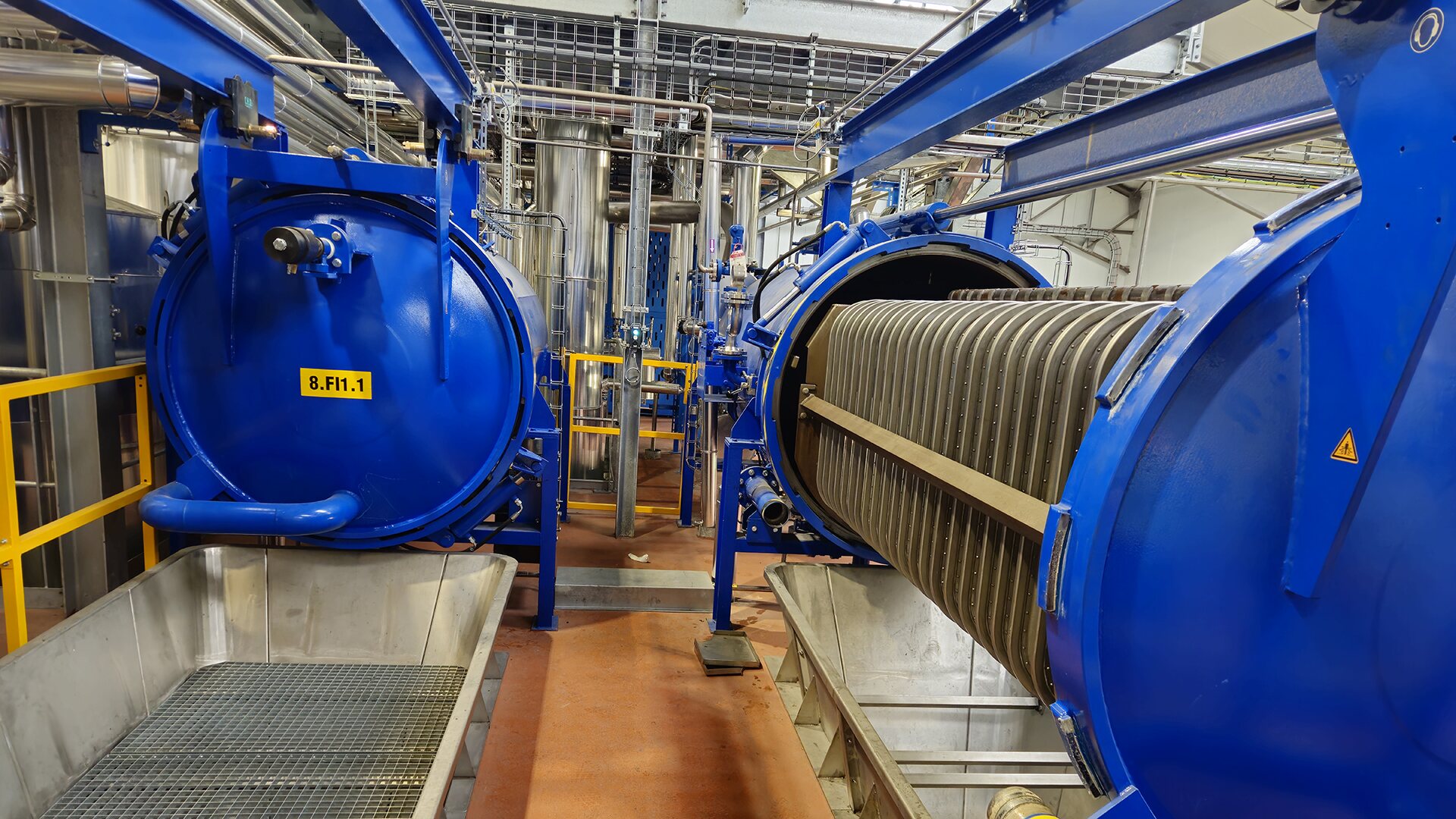The dewaxing process is only intended for sunflower oil. This is because of the wax that penetrates the oil from seed hulls and causes higher turbidity (cloudiness) or a sediment at the bottom of the vessel. Dewaxing leads to a purer and tastier oil.
The basis of dewaxing is the cooling down of the oil, which causes unwanted wax to precipitate. This process takes place in three steps: first, the oil is pumped into the initial crystallizer, equipped with an internal cooling system. Then the oil flows downstream into the second crystallizer, where crystal nuclei form. Afterwards, the oil flows further into the last crystallizer, where an internal cooling system maintains constant temperature, at which the remaining wax particles cluster with the crystal nuclei. In the final phase of the process, the crystals that have formed are separated out on a horizontal filter. What flows through is clear dewaxed oil; wax falls out in a discontinuous manner.
The company Farmet offers optional accessories that will satisfy even the most demanding customers. However, the most convenient solutions are usually our turnkey deliveries, which are optimized from both the technical and economic perspectives, meet all your requirements and include the automatization of the entire process.
Dewaxing removes wax, which crystallizes and settles at the bottom at lower temperatures. The highest wax content (up to 1,000 ppm) is found in oil pressed out of unhulled sunflower seeds. Pressing hulled seeds usually results in an oil with less than 200 ppm of wax. The dewaxing technology can be supplied at capacities between 1 and 10 tons of oil per hour; wax content at output tends to be less than 20 ppm.
